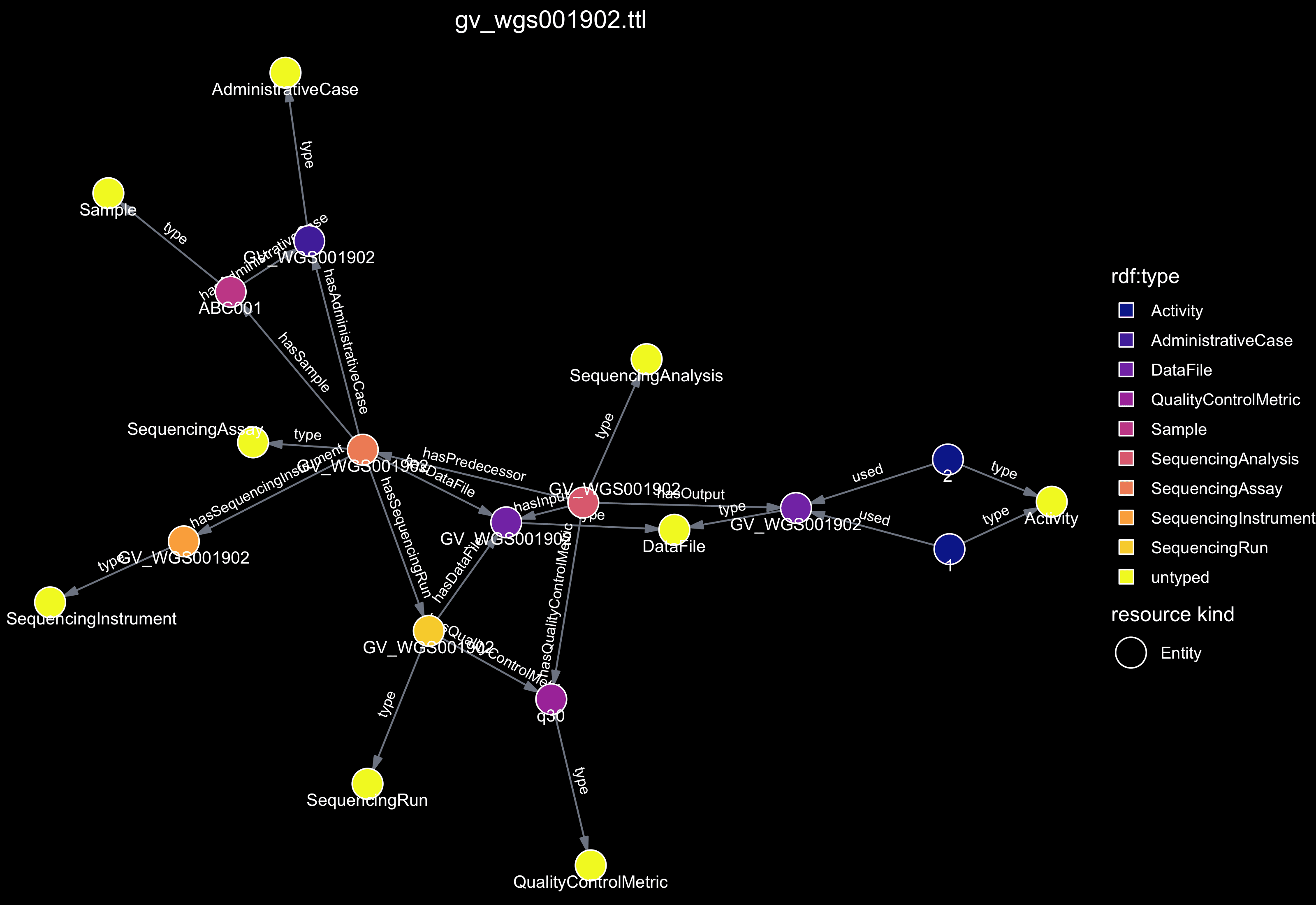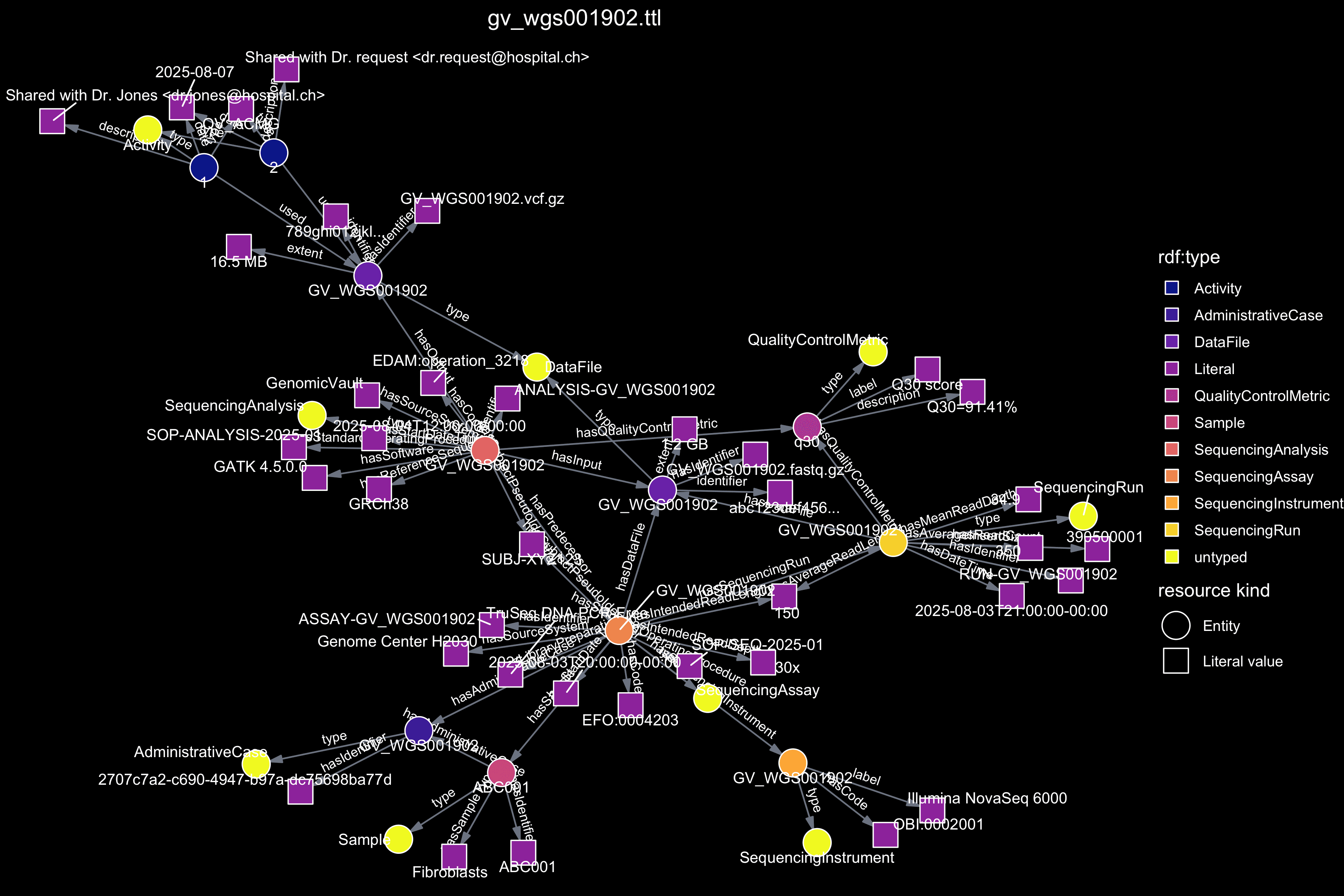SPHN-compliant RDF for clinical integration
RDF Turtle metadata stored in parallel to encrypted genomics. Ready if you want to involve hospitals, clinics, or national projects.
SPHN is the Swiss personalised health network mandated by the Swiss government to make health data interoperable across the country. It provides a nationally coordinated framework so hospitals, clinics, and research centres can exchange data securely and consistently. Using the SPHN model matters at a national level because it removes fragmentation, shortens integration timelines, and ensures data can move responsibly between care and research.
Our metadata is produced in SPHN-compliant RDF and stored as TTL alongside encrypted genomic files. This enables seamless connection to hospital and clinic systems locally, and aligns with global standards so integration with tools such as Epic and REDCap is straightforward.
RDF is a standard for expressing data as subject–predicate–object triples, which makes relationships explicit and machine-readable. TTL is a compact, human-readable syntax for RDF that is easy to review, version, and load into triple stores.
- SPHN-compatible classes and relations for assays, runs, analyses, instruments, cases, samples, and files
- TTL export held alongside source data for straightforward governance and audit
- Drop-in import to triple stores and analytics pipelines
Metadata graph for one genome, simplified snapshot

Metadata graph for one genome, fully expanded literals
